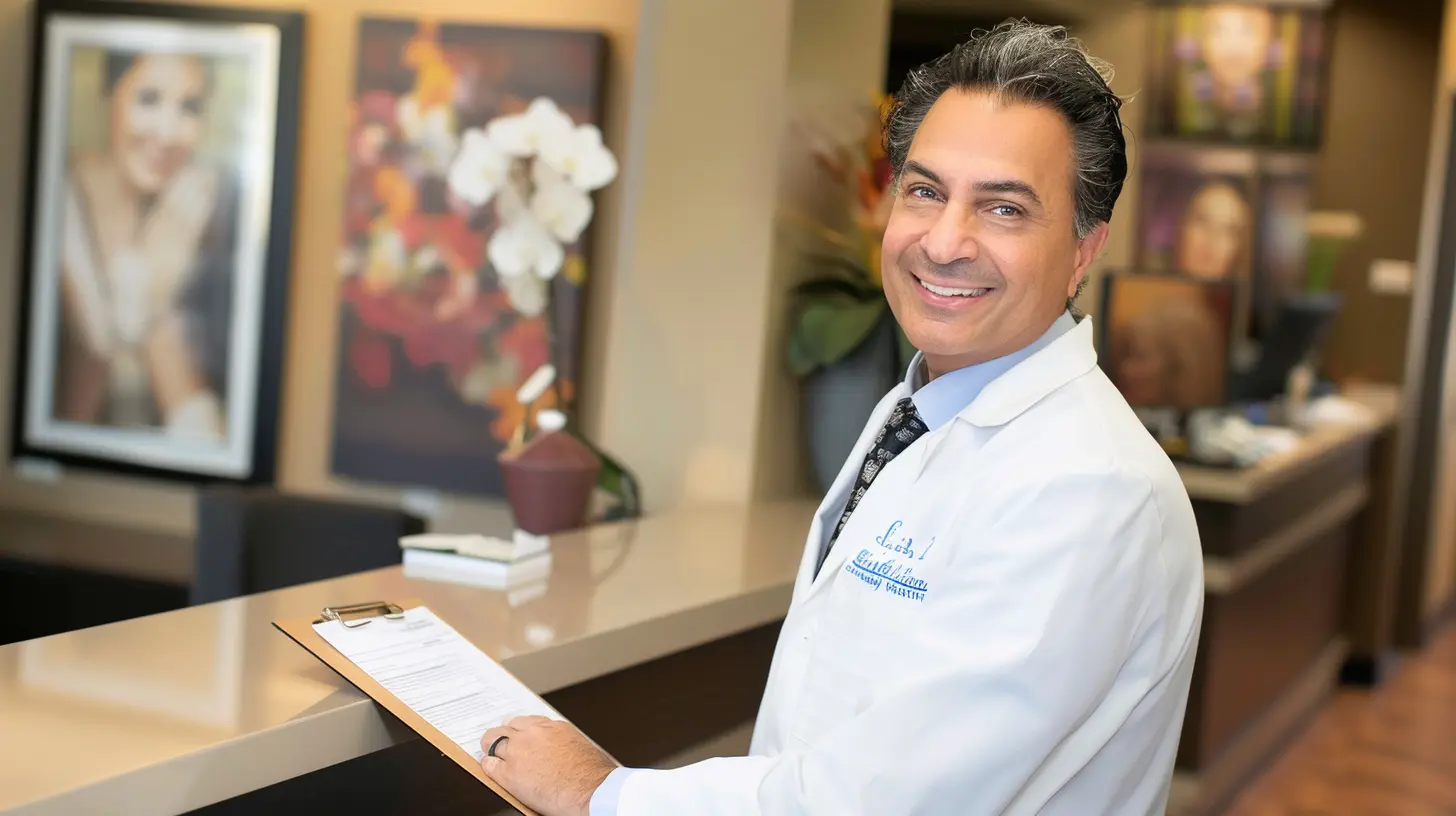Cosmetic surgery practices can’t rely on word-of-mouth alone anymore. Around 97% of people search online to find local businesses, including medical practices. Every month, more than 90,000 Americans search for “rhinoplasty” alone. This creates a huge chance for smart practices to capture new patients.
This is where PPC management for cosmetic surgery becomes essential. Pay-per-click ads let your practice show up at the top of the search engine results page (SERP) for key searches. You bid on terms like “plastic surgeon near me” and pay only when someone clicks. Good campaigns can put you above even the best organic results. About 46% of search clicks go to the top three paid ads on Google.
Success in PPC advertising isn’t just about buying ads. It needs smart planning: picking the right keywords, writing strong ad copy, targeting the right people, and managing your budget well. In cosmetic surgery, data-driven strategies help every dollar count. When done right, PPC can deliver strong return on ad spend (ROAS) by turning searchers into booked consultations.
If you’re looking for professional help with paid advertising, check out our services for plastic surgeons’ paid advertising.
Why PPC Management for Cosmetic Surgery Matters
Digital ads in healthcare are at record highs. Cosmetic surgery leads this trend. Online searches for most plastic surgery procedures have grown fast over recent years. The pandemic’s “Zoom Boom” made people more aware of how they look on video calls. More online demand means more competition among practices to get those leads.
Even as costs rise, surgeons find PPC ads worth it. Unlike SEO, which takes months to show results, or social media, which needs time to build followers, PPC gives instant visibility. Your practice can start showing up for searches like “cosmetic surgeon near me” the moment your campaign goes live.
The Digital Transformation
Cosmetic surgery marketing evolution from 2020 to 2025
for “Rhinoplasty”
Using PPC
Cosmetic Keywords
Healthcare PPC
for “Rhinoplasty”
Using PPC
Cosmetic Keywords
Healthcare PPC
PPC also delivers targeted traffic. You can focus ads on people searching for specific procedures and narrow by location, age, and income. A clinic might target ads within 20 miles of its office or focus on higher-income areas. This targeting creates quality leads from people actively seeking your cosmetic surgery services.
Most importantly, PPC is measurable and controllable. You set the budget and can change it anytime. Whether patients want nose jobs, hair transplants, or tummy tucks, you can spend more on top performers and pause weak ads. Healthcare providers typically see about 3.6:1 return on ad spend. Given the high value of cosmetic procedures, well-managed campaigns often do even better.
Key Components of Effective Cosmetic Surgery PPC Campaigns
Smart Keyword Research and Audience Targeting
Keyword research forms the foundation of PPC management for cosmetic surgery success. You need to find the search terms potential patients use and target those with high intent. Start with core services: “breast augmentation,” “rhinoplasty,” “facelift,” “liposuction,” “Botox injections.” Then expand to related terms like “nose job surgery,” “mommy makeover cost,” and “best cosmetic surgeon in [City].”
Focus on specific, high-intent keywords that show the searcher is ready to act. Terms like “tummy tuck Chicago” or “affordable liposuction” often convert better than broad terms like “plastic surgery.” These targeted searches indicate people know what they want.
Building a strong negative keywords list is just as important. These prevent your ads from showing on irrelevant searches, saving money on wasted clicks. A plastic surgeon might add negatives like “plastic surgery jobs,” “surgeon salary,” “free cosmetic surgery,” or “DIY Botox.” This filtering ensures your budget targets real potential patients.
Beyond keywords, use audience targeting features. Location targeting (geotargeting) is crucial since patients usually want nearby providers. You can target down to specific ZIP codes or set a radius around your clinic. Consider demographic targeting for age and gender when appropriate. Certain procedures appeal more to specific age groups or genders.
Note that remarketing in healthcare faces strict rules. Google prohibits retargeting ads for most health conditions and procedures to protect privacy. Cosmetic surgery falls under these sensitive categories. You can’t follow someone who visited your “liposuction” page with ads about lipo discounts. However, you can use Customer Match or create similar audiences based on past converters.
Writing Compelling Ad Copy with Strong Calls-to-Action
Once you target the right keywords and audience, craft ad copy that grabs attention and drives clicks. Your ads should highlight what makes your practice special and include a clear call-to-action (CTA). Consider what sets you apart: “Board-Certified Surgeon with 15+ Years Experience,” “Free Virtual Consultation,” “Financing Options Available.”
Include specific procedure names in headlines to improve relevance. An ad for “Brazilian Butt Lift – Certified Plastic Surgeon” works better than generic “Cosmetic Surgery Clinic” copy. Match your ad to search intent. If someone searches “non-surgical nose job,” mention “Non-Surgical Rhinoplasty” in your ad.
Strong CTAs are vital. Use phrases like “Book Your Consultation,” “Schedule a Free Consultation,” or “Call Today for a Consultation.” Tell searchers exactly what to do next.
Use ad extensions to boost visibility and provide extra info. Site link extensions can include “Before & After Photos,” “Patient Testimonials,” or specific services. Call extensions let mobile users tap to call directly. Location extensions show your address and help with local trust. These extensions not only give more info but can improve your quality score by boosting ad relevance and click-through rate.
Keep your tone professional but approachable. Cosmetic surgery decisions are often emotional. An empathetic tone like “Love Your Look – Expert care to help you feel confident” can work well. Avoid overly sales-heavy language or unrealistic promises. Stick to factual, benefit-driven points.
Creating Dedicated Landing Pages
Getting clicks is only half the battle. The real goal is turning clicks into consultation bookings. That’s where landing pages come in. Don’t send ad traffic to your homepage. Instead, create dedicated landing pages for each major service.
If you have ads for “Hair Transplant,” send traffic to a page all about hair restoration, not a generic services page. The landing page should immediately show visitors they found what they’re looking for.
Key elements of high-converting landing pages include a clear headline that matches your ad, a strong value proposition, visual proof like before and after photos, trust indicators like certifications or patient counts, brief procedure info, and a prominent CTA button or form.
Conversion rate optimization is the practice of improving these elements to get more visitors to contact you. The average conversion rate for medical practice PPC campaigns is around 3-5%. Even small improvements make a big difference. Increasing from 5% to 7% means two extra leads per 100 clicks, which could mean thousands in revenue for cosmetic surgery.
Effective tactics include A/B testing different headlines or images, trying different CTA text, ensuring fast page loads, and adding interactive elements like chat widgets. Match your landing page content closely with your ad and keywords. If your ad promoted “mommy makeover package,” the page should focus on mommy makeovers.
Tracking Performance and Making Data-Driven Decisions
Conversion tracking lets you see which campaigns and keywords produce results. Set up tracking for actions like “Contact Form Submitted,” “Appointment Requested,” or “Phone Call over 30 seconds.” This enables calculating cost per acquisition (CPA), which matters more than cost per click (CPC). Don’t chase cheap clicks – chase cheap conversions.
Monitor key metrics regularly. PPC isn’t a “set it and forget it” channel. Watch your click-through rate (CTR), conversion rate, cost per conversion, and quality score. If CTR is low, your ads might not resonate. If conversion rate is poor, improve your landing page or check if you’re attracting the right traffic.
🎯 Cosmetic Surgery PPC Campaign
Elite Plastic Surgery Center – Performance Dashboard
Rhinoplasty
Nose Surgery Keywords
Breast Augmentation
Breast Surgery Keywords
Liposuction
Body Contouring Keywords
Facelift
Facial Rejuvenation Keywords
Botox & Fillers
Non-Surgical Keywords
Tummy Tuck
Abdominoplasty Keywords
📊 Campaign Performance Summary
Well-structured ad groups with targeted keywords driving quality leads for cosmetic surgery procedures
Quality score (on a 1-10 scale) affects your costs. Higher scores can reduce your CPC by making your ads more favored in auctions. Scores below 5 usually mean something’s wrong with ad relevance, landing page experience, or expected CTR.
Use Google Analytics to see on-site behavior of ad visitors. You might notice mobile visitors have higher bounce rates, indicating slow mobile page loads or poor mobile experience. These insights help refine the user experience.
Consider call tracking if phone calls are important for conversions. Many cosmetic practices find significant conversions come via phone. Knowing which campaigns generate calls helps inform strategy.
Continuous Optimization Through Testing
Optimization is ongoing in PPC management for cosmetic surgery practices. Regular testing and refinement keep improving results. A/B testing lets the audience vote with clicks and conversions rather than guessing what works.
Test different ad headlines or messaging. You might test “20+ Years of Surgical Excellence” against “$100 Off Consultation – Limited Time.” Keep other elements similar for fair testing. After getting enough data, pause poor performers and try new variants on winners.
Bidding strategies are another optimization area. Google Ads offers automated options like Target CPA, Target ROAS, and Maximize Conversions. These use machine learning to adjust bids in real-time. For busy practitioners, these tools can often optimize better than manual management.
Keep refining your ad groups structure and ad relevance. Organize campaigns logically by procedure or service. Tight theming improves relevance and quality score. If an ad group has too many diverse keywords, break it into more specific groups.
Monitor device performance and timing patterns. Maybe mobile users convert at half the rate of desktop users, suggesting the need for mobile optimization. Or searches might spike evenings and weekends when people have time to research procedures.
Stay informed about industry trends and Google Ads updates. The platform evolves quickly. Policy changes can affect cosmetic advertising. Staying compliant avoids account issues.
Navigating Current Trends in Plastic Surgery Marketing
Competition in cosmetic surgery PPC is rising, but costs remain moderate compared to other industries. Cost per click typically ranges from $2-5 for most cosmetic procedures. Expect gradual increases as more practices come online. Counter rising costs through differentiation and efficiency.
Privacy changes affect tracking. Browser cookie restrictions and iOS privacy moves make following users harder. Google is moving toward a cookie-less future. This means less visibility into user behavior after clicks. Focus on first-party data and proper setup of tracking tools.
Digital Healthcare Marketing Trends
Key statistics shaping the cosmetic surgery marketing landscape in 2025
Today, mobile searches dominate. Over 70% of search ad impressions happen on mobile devices. Ensure campaigns are optimized for mobile users with mobile-friendly ad copy and fast-loading, easy-to-navigate landing pages.
Patient-centric content remains important. While strategy should be data-driven, execution needs human connection. Use professional but human language. Ads emphasizing patient stories or satisfaction can improve performance. Balance data insights with empathy and authenticity.
Turning Investment into Growth
Effective PPC management for cosmetic surgery can transform an empty waiting room into a full consultation schedule. The key is balancing science and art. The science involves tracking numbers like CPC, CTR, conversion rates, and ROAS, then continually optimizing. The art involves understanding patient hopes and fears, reflecting that in messaging and content.
Successful plastic surgery marketing strategies leverage hard data to drive decisions while executing with creativity and empathy. Knowing that cosmetic surgery leads average around $134 each helps with budget management, but campaigns must still make emotional connections with potential patients.
The online advertising space for plastic surgeons grows more competitive each year. Those who invest in professional ad campaign management and continuous optimization will see consistent new patient growth. Those who neglect it may get overshadowed by smarter competitors.
Performance monitoring and healthcare marketing analytics have become more sophisticated. Practices are tracking real surgeries back to original ad clicks, treating PPC as an investment rather than an expense. Many report campaigns costing $5,000 generating $100,000 in surgical revenue.
Every click represents an opportunity – someone interested in services you provide. With smart keyword research, compelling ad copy, optimized landing pages, effective remarketing (where allowed), proper negative keywords management, strategic bidding strategies, and continuous testing, you can turn more clicks into consultations and consultations into satisfied patients.
The plastic surgery industry continues evolving, but well-implemented PPC management for cosmetic surgery clinics remains a cornerstone of patient acquisition. Your future patients are searching online right now. Make sure they find you first, and give them compelling reasons to choose your practice for their aesthetic goals.



